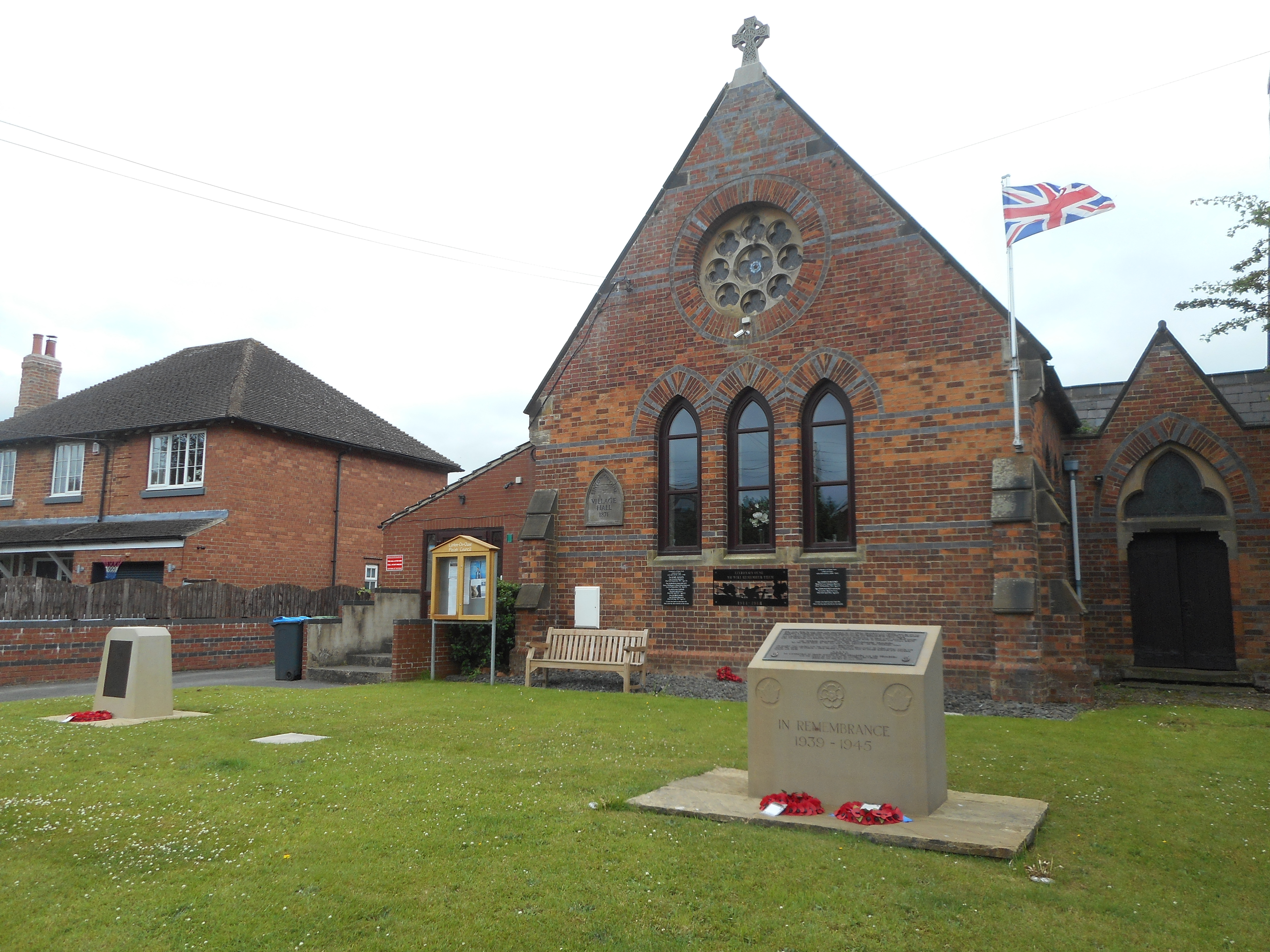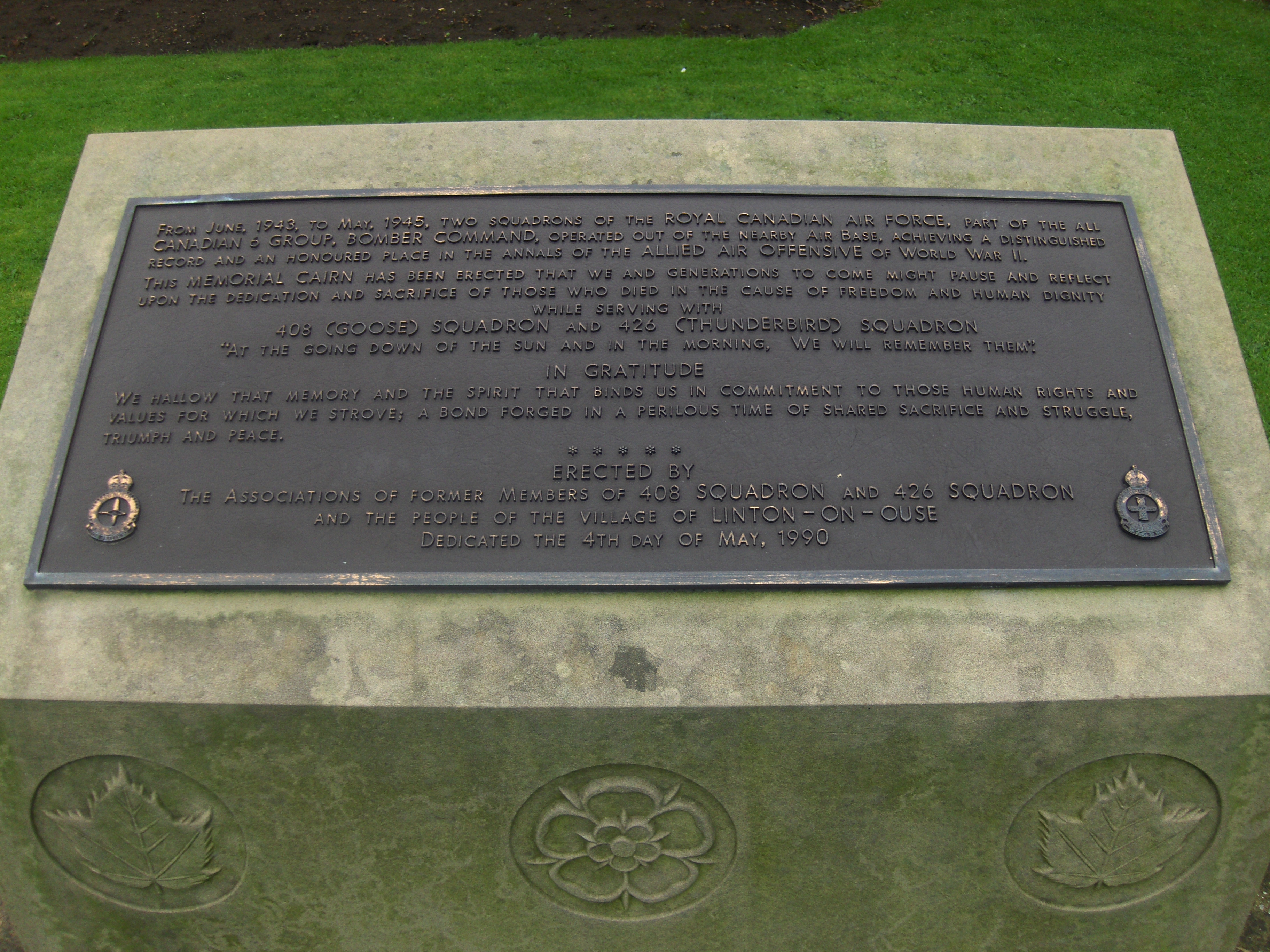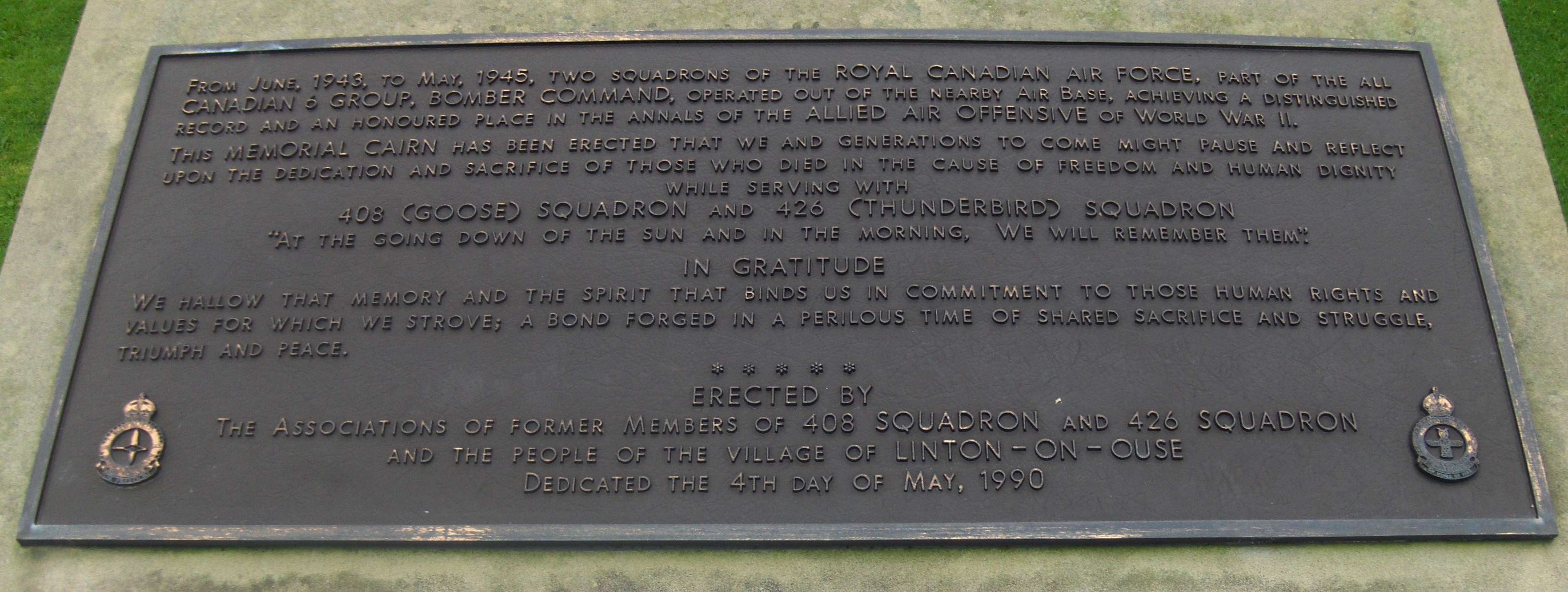Bennett, James Gordon
Personal Information
| Rank | P/O |
| Forename(s) | James Gordon |
| Surname | Bennett |
| Gender | M |
| Age | 28 |
| Date of Death | 27-01-1944 |
| Next of Kin | Son of James Henry and Annie Myrtle Bennett (née Boyle), of Carleton Place, Ontario, Canada. |
Aircraft Information
| Aircraft | Avro Lancaster II |
| Serial Number | DS710 |
| Markings | EQ-A |
Memorial Information
| Burial/Memorial Country | Germany |
| Burial/Memorial Place | Rheinberg War Cemetery |
| Grave Reference | 14. E. 14. |
| Epitaph | FROM CARLETON PLACE, ONTARIO HE CAME. "TRANQUIL MAY YOU SLEEP, DEAR SON" |
IBCC Memorial Information
| Phase | 2 |
| Panel Number | 130 |
Enlistment Information
| Service Number | J/19011 |
| Service | Royal Canadian Air Force |
| Group | 6 |
| Squadron | 408 (Goose) |
| Squadron Motto | For freedom |
| Trade | Air Gunner |
| Country of Origin | Canada |
Other Memorials
| Location | Village Centre, Linton on Ouse, North Yorkshire |
| Country | United Kingdom |
| Memorial Type | Stone Memorial and inscribed slate tablet |
| Memorial Text | In memory of 408 (Goose) and 426 (Thunderbird) Squadrons of R.C.A.F |
Miscellaneous Information
| James was born on 13 August 1915 at Carleton Place, Ontario. His father was a butcher and his mother was born at Carleton Place, Ontario. He had two brothers John and William and three sisters Mary, Annie and Elizabeth. The school he attended was shown as Public School 1921-1925 and High School 1928-1932. The sports he played were football, baseball and paddling and his hobby was shooting. |
| James enlisted on 28 July 1941 and after training was posted to the U.K. He embarked from Canada on 27 October 1942 arriving in the U.K.at 3 PRC on 5 November 1942. Then 23 OTU 8 December 1942, 1659 CU 25 March 1943, and 408 Squadron 11 April 1943. Sadly James lost his life on 27 January 1944. |
Commonwealth War Graves Commission
Fellow Servicemen
Please note that this list gives all the losses aboard the quoted aircraft and occasionally these may have occurred on an earlier date when the aircraft was not itself lost. Please check the dates of death carefully.
Last Operation Information
| Start Date | 27-01-1944 |
| End Date | 28-01-1944 |
| Takeoff Station | Linton-on-Ouse |
| Day/Night Raid | Night (8% moon) |
| Operation | Berlin. 530 aircraft, 33 losses- all Lancasters (6.4%). The German fighters were particularly early joining this stream on this raid- many joining some 75 miles off the Dutch coast The diversionary raids were somewhat successful in luring the fighters away, particularly the Heligoland mining raid. As had now become the norm, Berlin was cloud-covered and sky-marking had to be used, Local reports stated that bombing was spread over a wide area, including smaller towns and village in the outskirts. 20000 people were bombed out and 50 industrial premises hit, including several that were important to war production. 56 people were killed |


